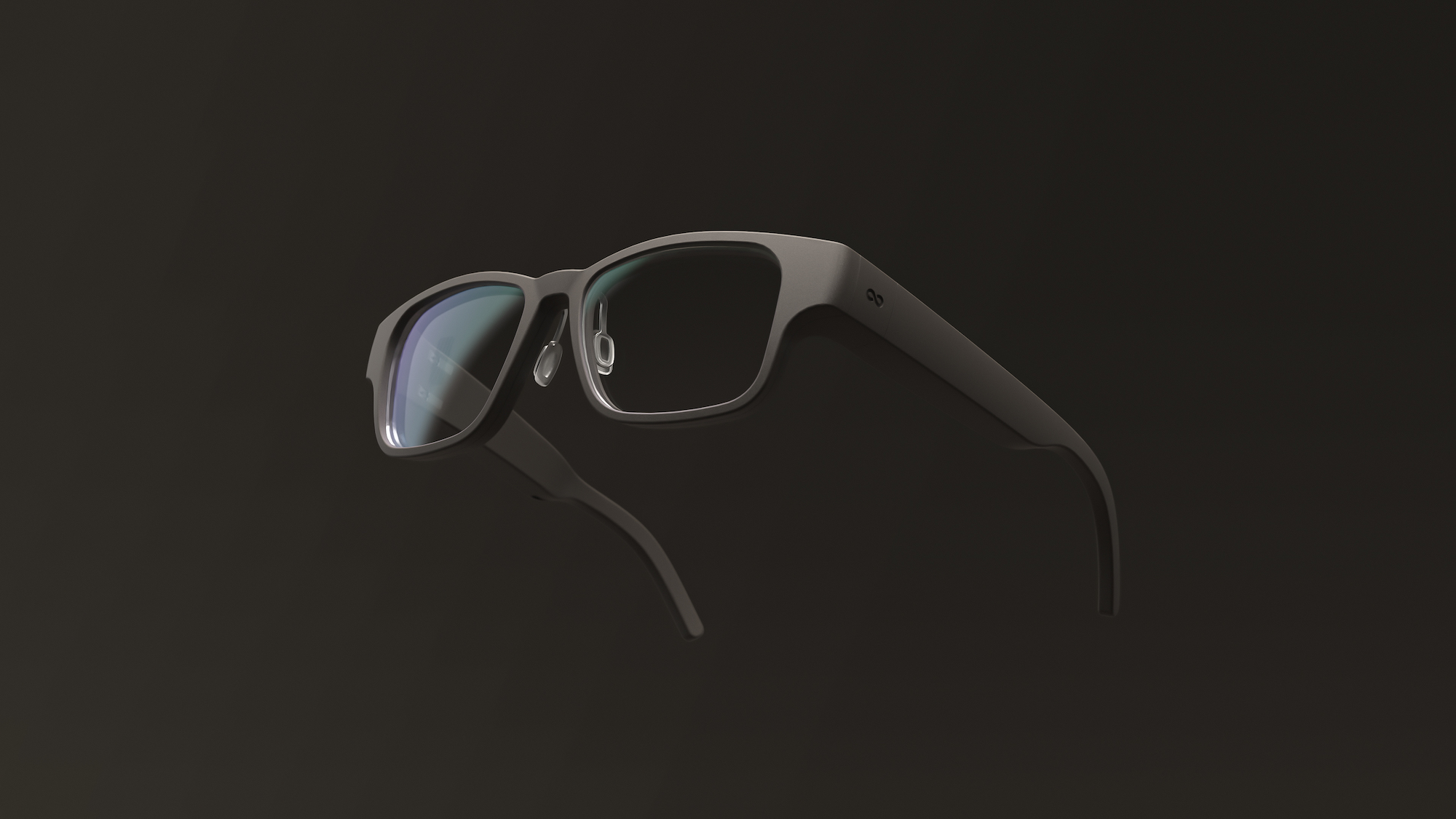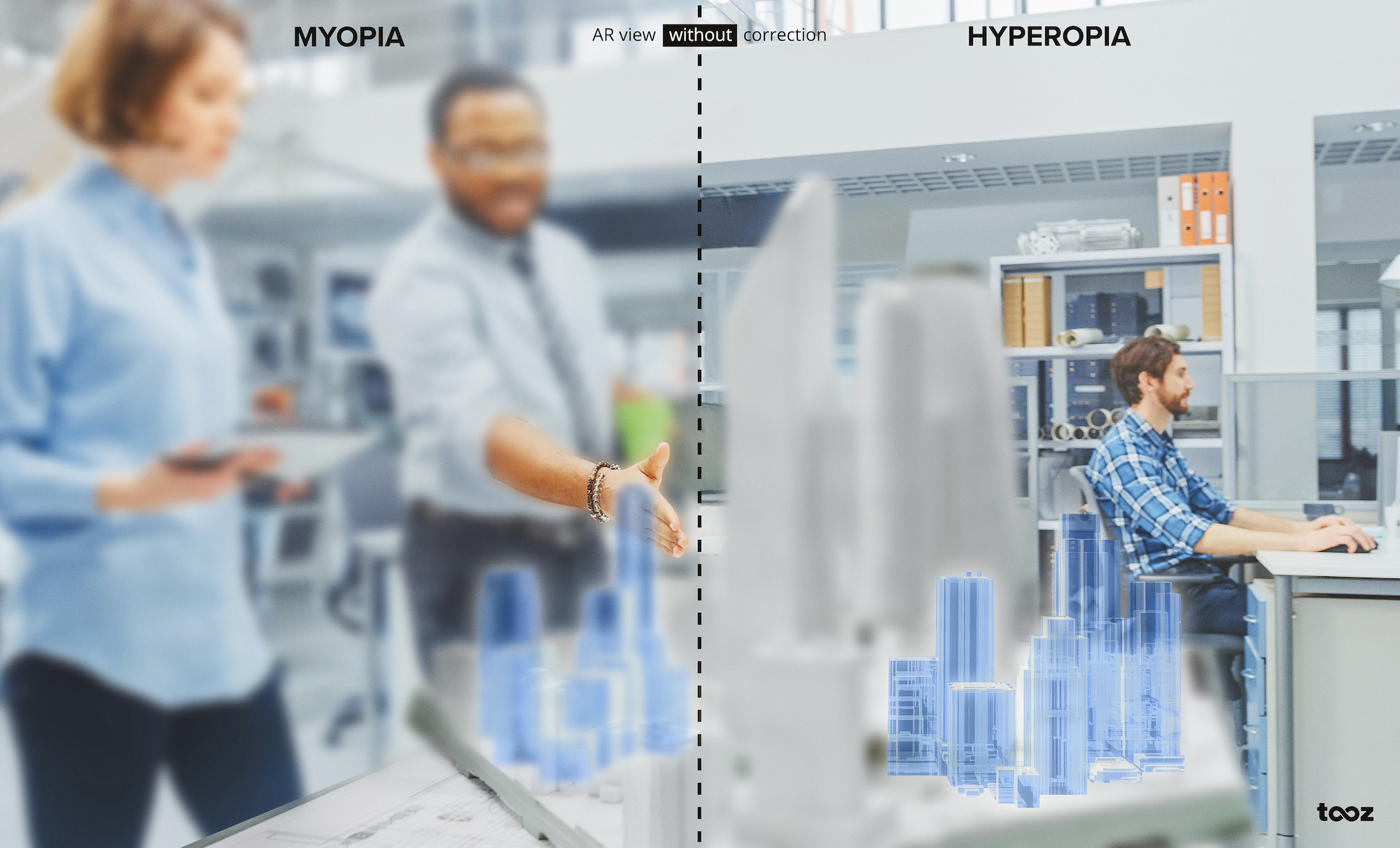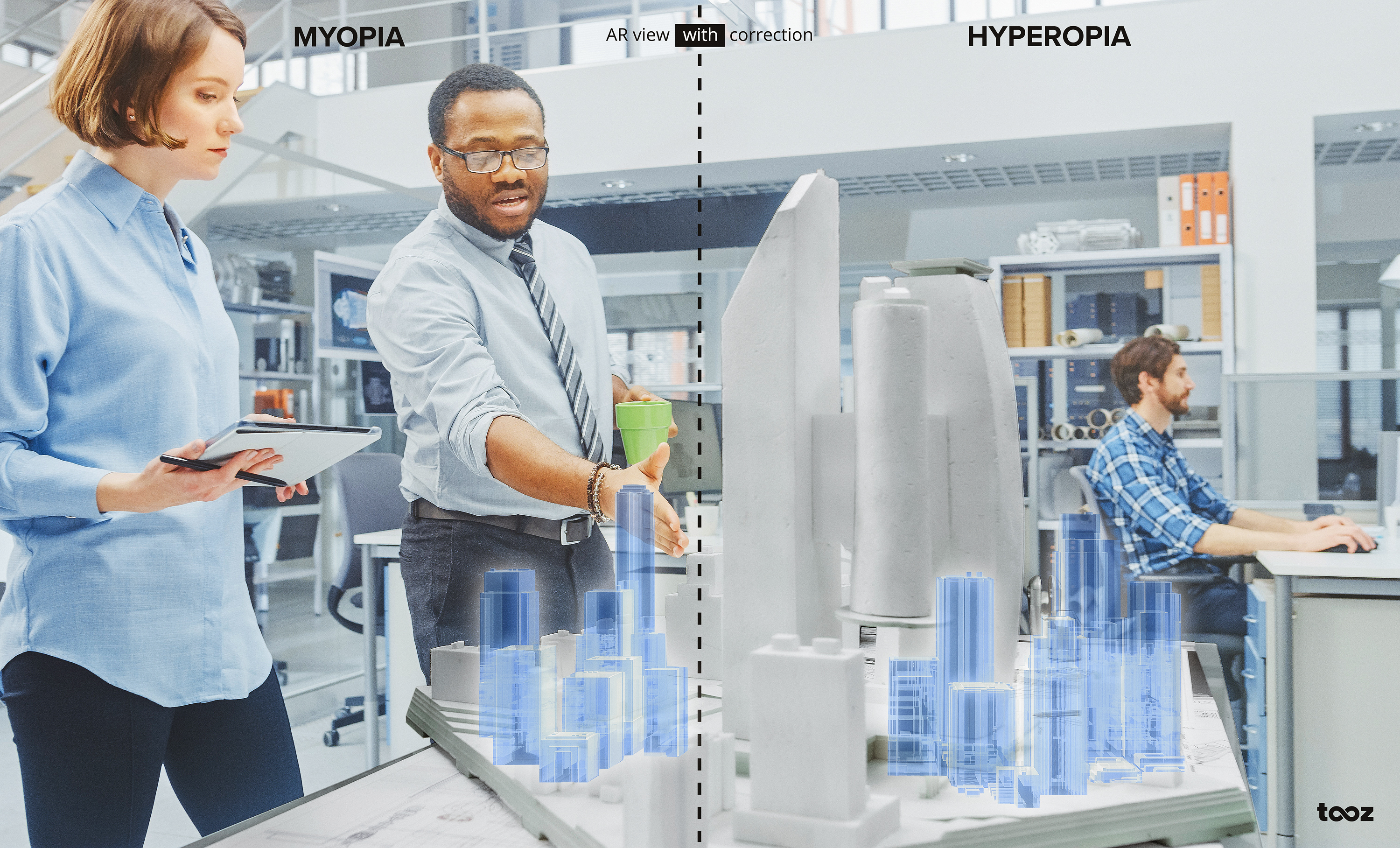The promise of truly wearable AR optics has enticed the tech industry for more than a decade. But until recently, products like AR headsets and smart glasses haven’t met one of the core consumer expectations: scalable prescription. As the need for vision correction is dramatically increasing internationally, especially among younger people, a high-quality AR display must consider the prescription market.
Previous generations of smart glasses could not scale the prescription process, if it was even part of the overall solution. Overall, the AR optics market has lacked a seamless, medical-grade correction solution — which is the main reason why people wear glasses in the first place. If optics manufacturers can make AR prescription glasses that consumers actually want to wear all day, it’s clear that product will be the vanguard for broader adoption of AR.
With unique technological advancements that integrate individual prescriptions with a stylish and unobtrusive design and AR capabilities, the Germany-based optics startup tooz is shaping how smart glasses should look and function for consumers. With their innovative ESSNZ Berlin reference design, tooz is guiding the smart glasses market into a new future defined by lightweight and scalable optics ready to be paired with ever-evolving AR capabilities.
The journey to ESSNZ Berlin
The company’s development journey started all the way back in 2014. Their mission? To prove that a curved waveguide could be manufactured in a scalable manufacturing process that uses injection molding, a type of manufacturing process for producing parts in large volume. It took roughly two years to develop the first scalable, injection molded optic model that could work with individual prescriptions, according to tooz CEO and managing director Kai Ströder.
From the start, tooz’s core goal was to perfect the optical engine for consumers with prescriptions and develop a methodical, thoughtful approach to a scalable all-day Rx and AR solution. The strategy was to first master the optical engine before attempting to layer on the emerging AR technology. Ströder’s team began with the belief that smart glasses will mostly be worn by people who wear glasses anyway for correction and protection — the buyer who needs glasses can easily upgrade to receive the advantages of smart glasses.
“We always said the optical engine is the critical part,” Ströder explains. “All the other components like computing and sensors will shrink and batteries will get stronger, but the optical engine will not change fundamentally. That’s why perfecting the optical end was key.”
From there, tooz developed a curved smart lens that permits visual correction for the eye and results in high unobtrusiveness, good virtual image quality, eye protection, and low weight providing smart glasses users may wear all day. And last year, tooz partnered with Jade Bird Display, a leading manufacturer in the development and mass-production of microLED displays, to jointly develop a new generation of optical engines for smart glasses. The combination of JBD’s color microLED display engine and tooz’s curved waveguide enables full color virtual screens while keeping a slim, lightweight, and stylish form together with visual correction of everyday glasses.
By bringing together competencies in optics, opto-electronics, and connectability as well as providing a unique customizable optics platform of smart lenses, tooz was poised to push the envelope of modern wearable technology.

Combining prescription glasses and AR
Now tooz’s innovative design, the ESSNZ Berlin, is equipped with the curved waveguide, which displays information in the wearer’s field of view while also meeting the vision correction needs of everyday glasses. Information displayed in the wearer’s field of view is provided via Bluetooth connection from the phone to the glasses, and once connected, a wide variety of notifications and functions can be displayed such as weather, navigation, calls, messaging and voice assistance.
The ESSNZ Berlin is also slimmer, lighter, and comes with a higher energy efficiency in comparison to other smart glasses. The tooz SWAP technology is a world-first that allows the independent swapping of smart lenses to adapt to a change in diopter or individual preferences of lens styles. The reference design allows fast and efficient adaptation to individual specifications of customers, whether businesses or private consumers. The individual correction can be integrated easily at existing prescription labs around the world. Having a templated glass design also makes for more cost-effective manufacturing where only the front part of the frame requires changing in terms of design and size.
As a result, the ESSNZ Berlin allows any player interested in launching consumer smart glasses to be fast to market. Because of ESSNZ’s adaptability to different use cases, various partners can confidently enter the market without having to create a new product from scratch. The reference design is a cost-effective way to speed up the timeline for companies investing in AR glasses, minimizing the risk associated with entering a new market and ensuring the quality of the design under their own brand name.
The future of AR optics
With the ESSNZ Berlin, tooz’s main focus was to develop an all-day AR glasses solution that people can fold and carry around as they do today with their current glasses. The company approached the problem methodically, with a laser focus on creating a reference model for comfortable, lightweight, and stylish glasses. That meant striking a balance between technical capabilities and the overall look and feel — but as Ströder argues, the most cutting-edge AR technology has yet to meet those existing benchmarks of comfort style, which is where past attempts within the industry ran into problems.
Normally, smart glass manufacturers have to compromise between the thickness of the lens, the field of view, and the size of the eyebox. The tooz team is working to break this compromise for future iterations of its AR optics platform and optimizing all three parameters at the same time, making the field of view bigger while making the lens thinner and the eyebox larger, still in the package of a curved normal looking lens.
“No optical solution for augmented reality will be successful without prescription, regardless which waveguide, combiner, or technology is providing the virtual image. tooz is developing prescription solutions for various AR systems, not only tooz owned waveguides,” Ströder says.
The company is also investing in ways to integrate AR technologies like 3D augmentation content or virtual overlays into its smart prescription glasses. The AR industry has produced multiple high-performance waveguides, but few providers invested in high-quality prescription solutions. The current industry standard for AR glasses — the planar waveguide — can be used for 3D augmentation, overlay, and consumer gaming. Yet planar solutions are challenging to integrate with prescriptions.

How people who need vision correction for myopia or hyperopia see the real world without their glasses, and how augmented content appears via an uncorrected optical system.
By executing an optics-driven technology roadmap, tooz is leading the evolution of prescription glasses to AR wearables. Ströder also hopes to bring its broad competence to many special applications and niche markets where AR solutions have recently emerged, such as headsets used in professional settings like production or manufacturing.
“By seamlessly integrating AR with medical-grade Rx, we’ll see a boost of adoption of these solutions,” Ströder predicts. “We want to make medical-grade smart glasses easier to buy, easier to use, more affordable, and accessible everywhere in the world. That’s the goal.”

How planar AR solutions can look for people who need prescription glasses for myopia or hyperopia, if they are properly integrated with tooz’s platform.
Discover how tooz is building the future of smart glasses.